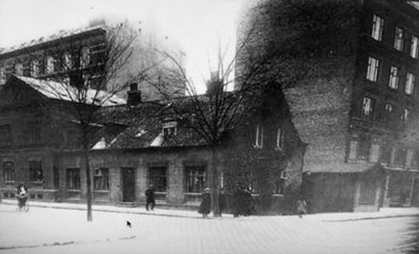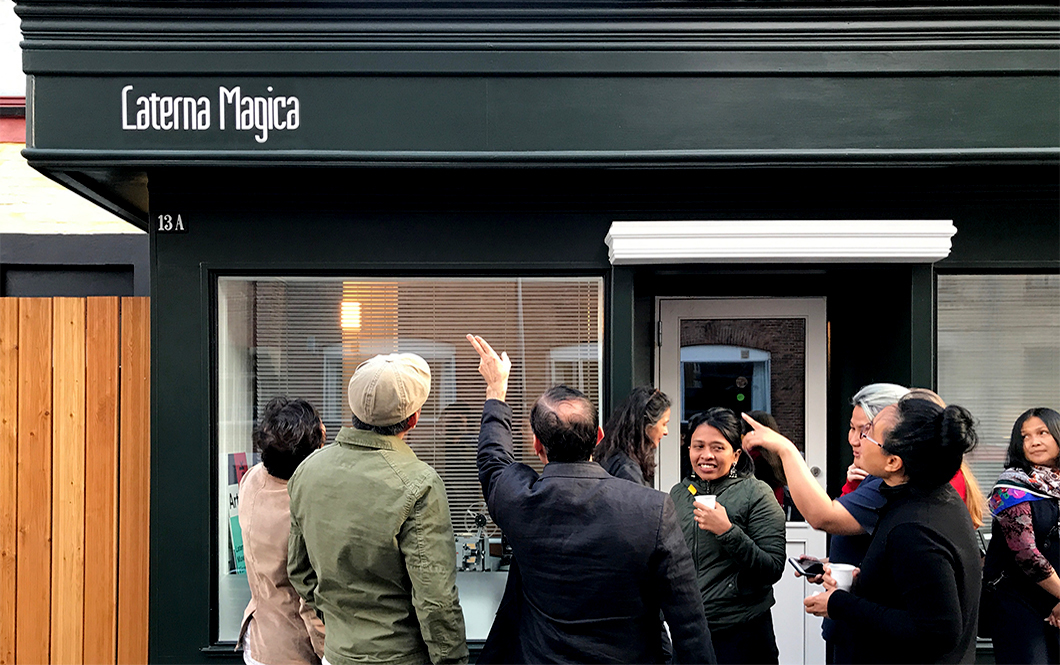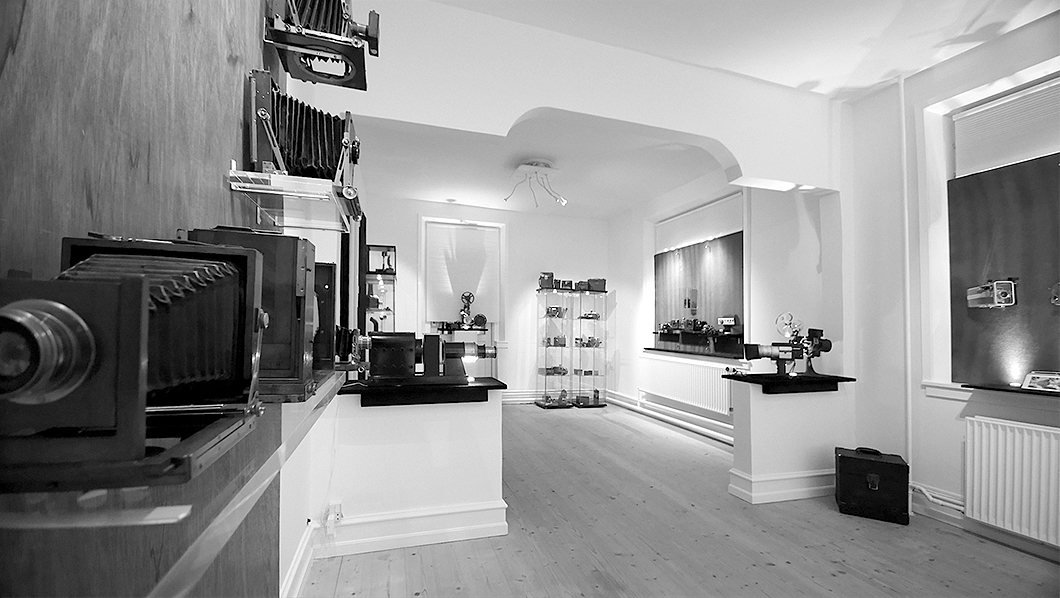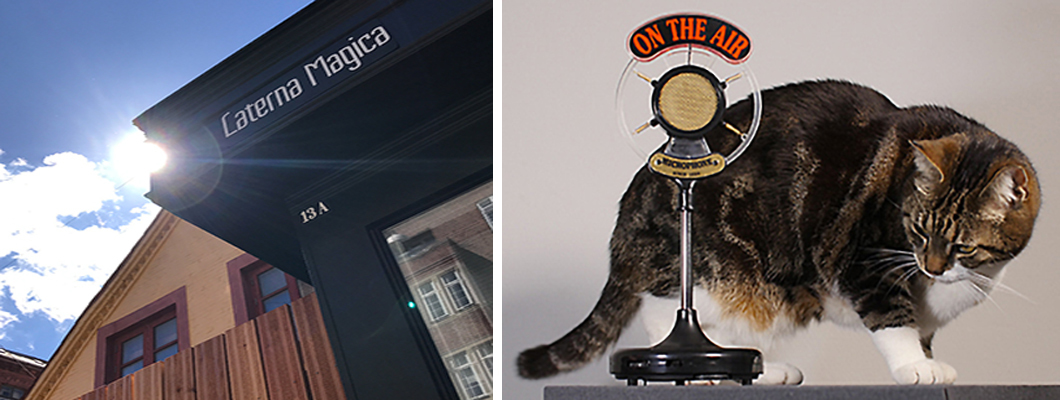About
Situated in Frederiksberg in the heart of Copenhagen, Laterna Magica Museum for Visual Knowledge features a diverse vintage camera assemblage, a photo archive, and analog artifacts that represent the evolution of the camera as an organism from the pinhole camera obscura to the digital age.
With its own permanent exhibition, mini cinema space, vintage photo and modern film production studio, Laterna Magica's mandate is to develop and promote an alternative visual aesthetical experience related to human history.

BUILT IN 1889 BY ARCHITECT JOHAN HEINRICH LÛBCKE, TODAY THE HOUSE HOSTS LATERNA MAGICA MUSEUM, COPENHAGEN VINTAGE STUDIO, IBN AL HAYTHAM CINE AND CAFE OBSCURA.

LATERNA MAGICA MUSEUM IN 2019, PHOTOGRAPHED BY A CONLEY FOLDING PLATE CAMERA WITH WOLLENSAK SHUTTER AND BURKE & JAMES FILTER, MADE IN WOOD WITH RED BELLOWS AND HIPPOPOTAMUS SKIN, 1910.


The work of the museum takes outset in the history of optics that started with Euclid, Ptolemy, Aristotle, the book Dream Pool Essays (1088) by the Chinese Shen Kuo, and the father of modern optics
Ibn al-Haytham, also known as Ptolemy Secundus, and his book Optics (1011-1021), which gives the first clear description of the camera obscura.

SKETCH OF THE PRINCIPLES BEHIND THE CAMERA OBSCURA, FIRST DISCOVERED BY IBN AL HAYTHAM, ALSO KNOWN AS ALHAZEN OR PTOLEMUS SECONDUS, AROUND THE YEAR 1015.
Vision

The main objective of Laterna Magica Museum is to preserve, research and further communicate and educate audiences about one of the most important communicative elements of the human narrative, the knowledge of visual history.
The museum works on the history of visual aesthetics, image and filmmaking, and visual culture with diverse interests in the fields of social history, scientific research / experimentation, and critical theory. It engages with the public space and the way people use it, questions institutional thinking and present alternatives.
The museum regards visual knowledge, image- and filmmaking as agents of empowerment, and involves audiences and professionals
from all backgrounds and communities. It bridges and nurtures the relationship between cultural institutions and the public through cross-field collaboration including researchers, aestheticians, artists, journalists, and filmmakers from around the world.
With the aim of providing a coherent technical and cultural asset in relation to visual history, Laterna Magica Museum offers a productive / informative / interactive social space where past and present knowledge is studied and transformed into new realizations, productions and inventions, in addition to a display area for the history of visuality and its development.

Activities

THEORY AND PRACTICE
The activities of Laterna Magica Museum navigate between the fields of visual research, theory and practice, and reflect on topics from the history of photography and filmmaking to contemporary developments in constructed media, art film and documentary filmmaking.
COLLECTION
The museum preserves and showcases a collection of one-of-a-kind items, some of which are only now made public in Denmark, like the magic lantern collection, the espionage collection, the animal skin camera collection, and the subminiature collection.
RESEARCH
Laterna Magica Museum initiates research in multiple fields such as the science of vision, the technical discoveries that enabled capturing and sharing photos and films, the history of cameras, projectors and artifacts and the culture surrounding them, the impact of images in contemporary society, and documentation of unique periods.
LAB
Laterna Magica invites visitors to interact with special equipment and techniques from the early era of photography and cinematography. The museum offers the audience first-hand access to some of the 120-year-old cameras in its collection, the possibility to produce black and white photos in the museum’s vintage studio and dark room, and transform them into 3D objects.
A/V STUDIO
As an institution dedicated to the development of visual knowledge, Laterna Magica Museum also places itself in the context of the present as it features a modern production studio of multi media, documentary and art film.
SOCIAL
In Laterna Magica Museum's social space visitors can experience the life transformation of the room into a camera obscura, while learning about the first discovery of the phenomenon.
The museum is a multi-dimensional, interactive space that gathers people of different ages and backgrounds through projects that explore past and current visual discoveries and contribute to the future of visual knowledge.
Welcome to a clandestine history of the visual world!

Donations
Laterna Magica Museum is a privately owned museum with own house and collection. Our curators work intensely to put before audiences an informative and diverse collection. The items on our website are a small part of the Laterna Magica Museum collection, described to the best of our abilities and knowledge.
The museum is interested in acquiring all sorts of equipment related to humanity’s visual history. If you are content with the museum’s work and what it represents, please consider making an item-based donation. You are welcome to contact us for a meeting to donate items to the museum collection. Upon donation, the ownership of the items passes to the museum.
About 41.000 different cameras are listed in the world-renowned McKeown's catalog, therefore the Laterna Magica Museum collection has a long way to go. However, donating your cameras can boost the museum’s collection to become more significant to the history and to visitors.
Laterna Magica Museum is based on voluntary work. Although the museum has limited resources, we remain determined to match the many dedicated existing collections. We can only do so with your help, so do not let your camera stay in the attic, donate it and have your name on the donator list.
We are structured to preserve cameras much longer than a single lifetime so the cameras in the museum collection will be preserved in perpetuity.

Founders

Laterna Magica Museum for Visual Knowledge is initiated by a group of art historians, curators, journalists and filmmakers. Since 2004 they have conceived and implemented art exhibitions, film festivals, radio programs, TV documentaries and books addressing the position, function and responsibility of visual narratives and constructed media in relation to contemporary society.
Members of the association also set up conferences and talks, and publish articles and books on issues like globalization, media representation, and aesthetic journalism.
DONORS AND CONTRIBUTORS
Flemming Ivar Nielsen
Henrik Ditlev
Jan-Erik Sandberg
Jens Lund
Jytte Jensen
Kirsten Helmsby Eriksen
Lone Kold
Olga Moskovchenko
Sophus Friis Mathiasen
Lona Stegger Madsen
Knud Vormstrup Madsen
Michala Mentze
Gerda Stokkebro Hansen
Vinja Hansen
Ib Westersø
Jørgen Kornum
Dimitris Chrysostomou
Frank Alling
LATERNA MAGICA ASSOCIATION GROUP
Management Jacob Falk
Advisor Alfredo Cramerotti
Curator Suzanne Russell
Communication specialist Jan Schmidt
Museum guide Louise Augusta Krogh
Researcher Elsa Solorio
Head of analog lab and education Daniel Dam
Videographer and photographer Eli Rama
Photographer Allette Ngo Sørensen
Digital services Jakob Huss
Museum service officer and technician Adam Ishak
INTERNS
Ella Gehrt
Martin R. Christensen
Marie Blachmann
Sigrid Nielsen-Boreas
Katja Havsager

